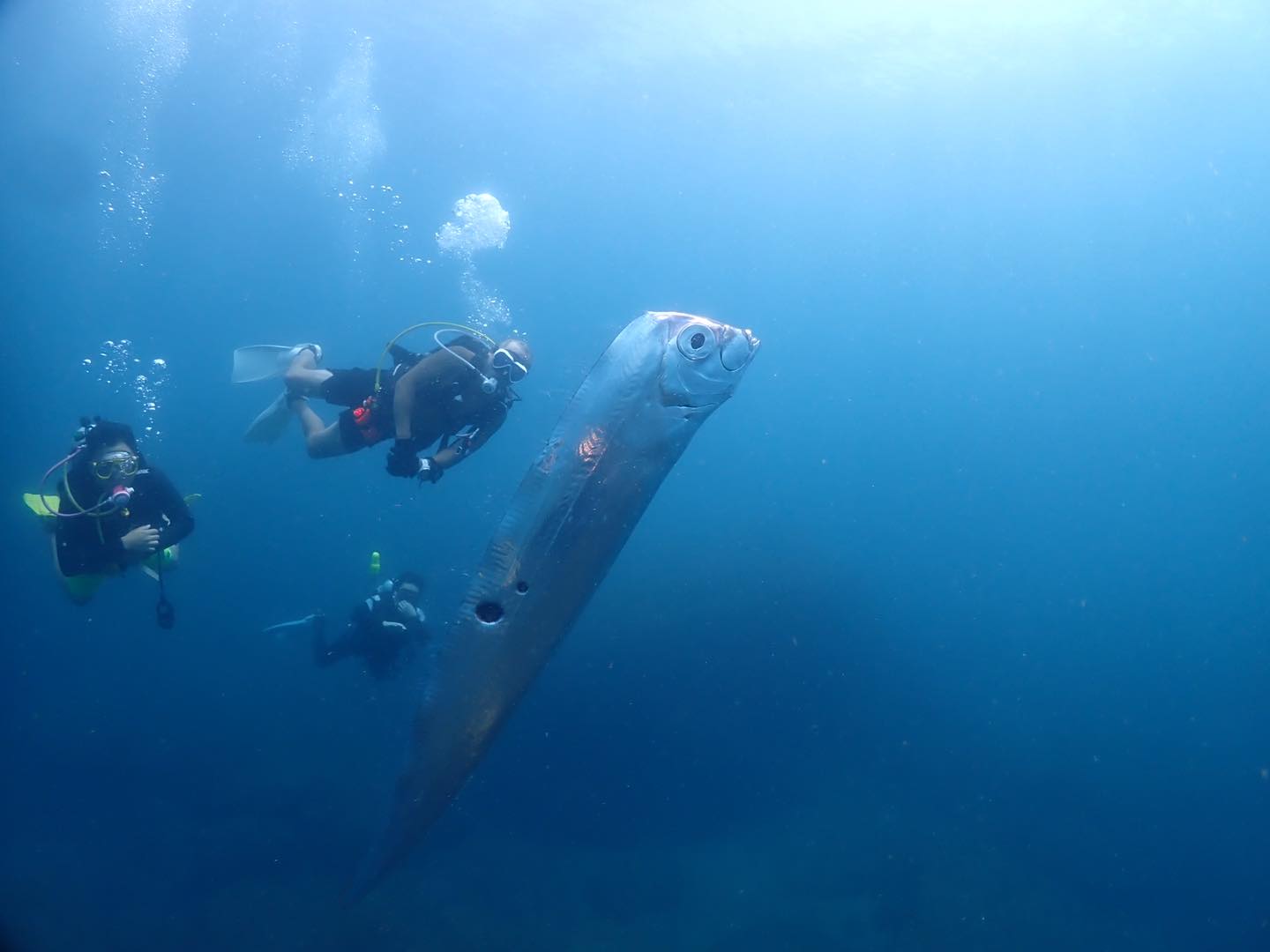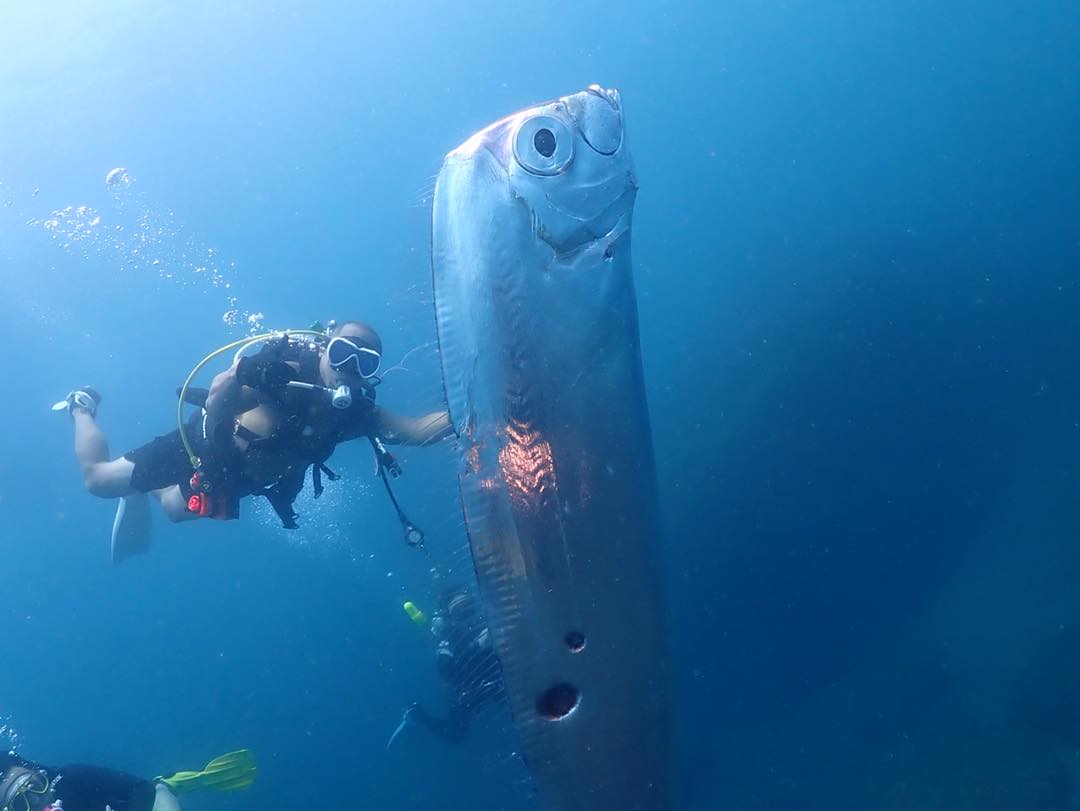A group of divers recently made a remarkable discovery when they came across a massive deep-sea fish known as the Russell’s oarfish, which exhibited bite marks along its long body. Believed to have been caused by a cookiecutter shark, these round bitemarks added to the intrigue surrounding the fish, often referred to as the ‘Harbinger of doom.’
The Russell’s oarfish was spotted near the ocean surface, leading the divers to speculate that the large fish was close to death. Diving instructor Wang Cheng-Ru, who captured images of the oarfish off the coast of Ruifang, Taiwan, explained that it likely ventured into shallower waters due to its deteriorating condition. Wang, with years of scuba diving experience, mentioned that this was his first encounter with an oarfish.

Measuring approximately two metres in length, the injured Russell’s oarfish bears a resemblance to sea serpents due to its size and shape. In Japanese mythology, oarfish are considered as harbingers of earthquakes and misfortune. This belief gained attention following the 2011 Tōhoku earthquake and tsunami when a number of these rarely seen fish washed ashore in Japan between 2009 and 2010.
However, it is important to note that the Ecuadoran Geophysical Institute stated in August 2022 that the myth linking oarfish to earthquakes has no scientific validity. Despite their association with natural disasters, oarfish are fascinating creatures. They are among the longest fish in the ocean, capable of reaching lengths of up to 17 metres (56 ft) and weighing over 200 kgs (441 lbs). Oarfish have a scaleless body with a slimy, silvery protective coating called guanine. Their dorsal fin starts between their eyes and extends to their tail.
These adaptable fish can be found in most of the world’s oceans, excluding the polar regions, thanks to their ability to tolerate various temperatures. Oarfish inhabit depths of up to 1,000 metres (3,280 feet), making sightings relatively uncommon. Occasionally, they may wash up on beaches following storms or when they sustain significant injuries. Despite their mysterious nature, scientific studies have yet to establish a link between oarfish and seismic events.






